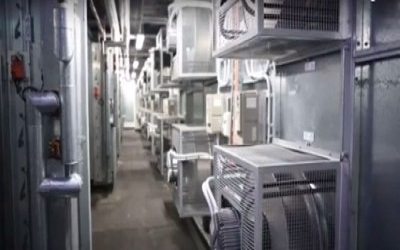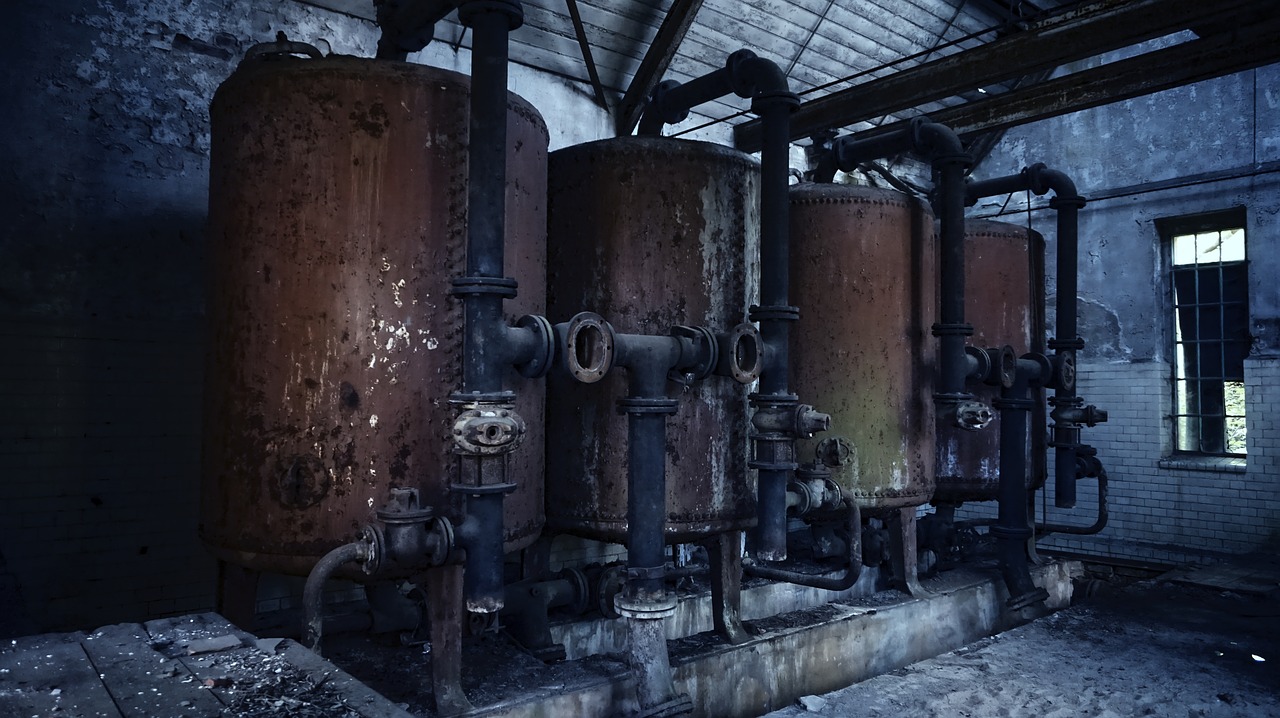Why Our High Efficiency Condensing Boiler is inefficient
Why Our High Efficiency Condensing Boiler is inefficient
Now that you have installed the high-efficiency condensing boiler, but why the gas consumption remained the same as before?
So is the mechanical installation wrong? You may have heard it all the sales pitches. Before your purchase, you were told the condensing boiler was one of the first to come up with onboard microprocessor control for increase efficiency, titanium, stainless steel heat exchanger, fully condensing, fully modulating, what could go wrong? It is designed for high-efficiency operation. It’s a condensing boiler that will do what it says it’s going to do but why your bill did not reduce?

If you are not operating your condensing boiler as it is intended, might as well not upgrade them!
In a nutshell, the modulating boiler modulates to whatever temperature you desire. If you have a regular 30kW boiler, and every time it kicks, it fires at 30kW heating. On the other hand, a modulating boiler will kick in a lot lower and modulate to whatever based on the time it’s running. It’ll modulate to whatever temperature you need. So it fluctuates on its capacities. Hence you’re not burning full capacity all the time.
In other words, if you require 30kW heating, the condensing boiler will operate at 30kW. If you need 10kW, it will run at 10kW. You’re not bringing on 30kW heating capacity to satisfy a 10kW load. And that’s where you are getting a lot of the efficiencies.
It’s important to note if you don’t see condensing that water’s coming out of the bottom of the unit you have a problem. What is that water? What’s so important about that term condensing boiler?
The condensing the part of the water is from the gas fume. There’s a lot of moisture in the flue gas. On a regular old-style boiler, they just let the heat exhaust through the stack or chimney, and the exhaust flue temperature can be as high as 150°C to 200°C or even more, depending on the size of the boiler. In condensing boilers, you’re keeping the heat in the boiler longer. So the temperature of the flue gas exits at a lot lower temperature of about 40°C.
You’re keeping the heat in the boiler longer, keeping in and condensing it down as it cools down, you get condensate dripping off the heat exchanger. Keeping the heat in the appliance longer and making use of this heat to increase the condensing boiler efficiency. What efficiency can we expect from condensing boilers? You’re looking anywhere between 92 and 95% typically, and there are variables. Some are even as high as 108% or so!
Say if you were at 95%, every dollar you spend for some fuel, you would get ninety-five cents of heating out of that boiler. For conventional boilers, their efficiencies are anywhere from 65 to 75%, so for every dollar, you feed that boiler in fuel, you might be getting 75 cents. That’s a big difference of 20 cents, 20% more heating from your condensing boilers.
What if you see condensate discharging from the condensing boiler? If you know that condensate is running down the condensate line, it’s a good thing. A trickling of condensate is useful if the boiler is not condensing; it’s not working correctly, and you should be concerned. You should be concerned that you are not getting the correct efficiency. The more the condensate, the higher its operating efficiency.
Unfortunately, you still see condensing boiler design settings similar to conventional boilers! High-efficiency boilers are designed to run cooler water temperatures for long periods. The old cast-iron style boilers, the ones that are starting to hit the end of their life cycle after being around for 70, 80, 90 years, are designed to run really hot water temperature for a short amount of time.
There are so many instances of high-efficiency boilers that are not saving people the money that they were promised on their fuel costs. And why is that? It’s basically for a few reasons.
First off, it’s historical! You have been conditioned over many, many years. We are used to instant gratification from their heating system. The primary purpose of heat is comfort. We turn on our heat in cold internal spaces. The space gets warm in a relatively short amount of time. Again, the old boilers, they are high heat units. They heat water very hot in a short amount of time. And that equals you being warm, relatively fast. However high-efficiency boiler is not designed to do that, but we are still trying to use them in that fashion. So whose fault is it?
And when installed and operated correctly, it can save you 20 to 30% on your heating costs. But they have to be installed correctly, and you have to use it properly. What’s been happening is you have your condensing bolier installed. But the installer never sits down and explains to you that the only similarity between this boiler and your old boiler. Even worse is the consulting engineer that design the system did not know any better the difference.
Condensing boiler technology is 100% different from the non-condensing boiler. So what’s happening is the people are still trying to operate their new condensing boiler like their old one; where at night they turn it down 5K and then in the morning they get up, and they turn it up back to 21°C and realize that their house isn’t getting warm. Or they go to work in the morning, turn the thermostat down to 17°C, and they get home after eight or 10-hour shift and turn it up to 21°C.
And it’s not until midnight that the house finally recovers. But you are used to the house getting warm in about 15 minutes. So what happens is people complain. High-efficiency condensing boiler run colder water for more extended periods! So instead of running hot water through your 10 minutes, they run water, half that temperature for three, four or five, six hours continually. That’s why setting backs turning your heat off when you go to work. They don’t work with high-efficiency boilers. And this is a tragedy because this technology is incredible and can save you a ton of money. But if you’re not informed on the new way, how would you expect to know?
You’re not going to save any money. I’ll give you an example of the tragedy from the professional side. A lot of times what happens, they get these calls. And this happened with the old owners of this home, with this boiler, they call it. It’s not warm enough in here. It’s taking a long time for the house to heat up. And a well trained professional would have been able to explain. Well, you know, this is a modulating, condensing boiler.
Modulating means, it can regulate the water temperature up and down based on what the external ambient temperature. In the old boiler, your heating water just goes from 0°C to 80°C. And there’s no modulating in between. And the installers should have explained.
Many instances, the installer came out and disconnected the outdoor reset. What the reset is, it’s a thermometer and a temperature gauge that communicates with the computer. The condensing boiler has a computer inside to what the temperature is outside. And then the boiler makes a decision based on the temperature outside what the water temp in the home will be to heat the house. What that installer came and disconnected that. So now this boiler turned into a cast-Iron boiler to where you turn it on, and it gets the radiators or whatever your emitters and things get hot in 15 minutes.
Well, what’s the point of having a high-efficiency condensing boiler if you’re going to be using it the same way you used your old boiler and what a tragedy. And I suspect that this is happening a lot. I have seen this first hand.
Let’s just quickly go back to why this thing is called a high-efficiency condensing boiler. It’s high efficiency because it can do modulation and it’s condensing unit for the sake of making things not very complicated. Let’s talk about the modulation. That means this condensing boiler can decide what the water temperature will be, where your old boiler couldn’t. It looks outside, and it says it’s 4°C outside, it can say I’m only going to heat the water to 60°C instead of 80°C based on the return water temperature.
Common sense tells you that it takes a lot less energy and fuel to heat water to 60°C than it does to 80°C. So that’s where you’re 20 to 30% savings in fuel. However, if you’re turning the boiler off for eight hours and expecting 60°C, 60°C water to heat your home in 10 minutes, you’re going to be very disappointed because it’s not going to work. These boilers, again, are designed to run cooler water temperatures for more extended periods.
So it’s just a tragedy because these condensing boilers are awesome. These high efficiency condensing boilers are fantastic indeed. You want to run these condensing boilers properly; you need to run them all the time and run them longer. It’ll be a pleasant, steady temperature, but you can’t turn your thermostat off for five or six hours and expect that you’re going to be able to recover from that temperature drop in a short amount of time.
Related
Read more: Fan wall

